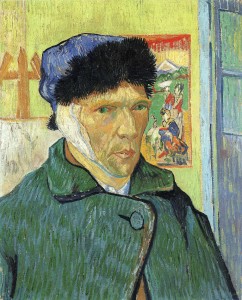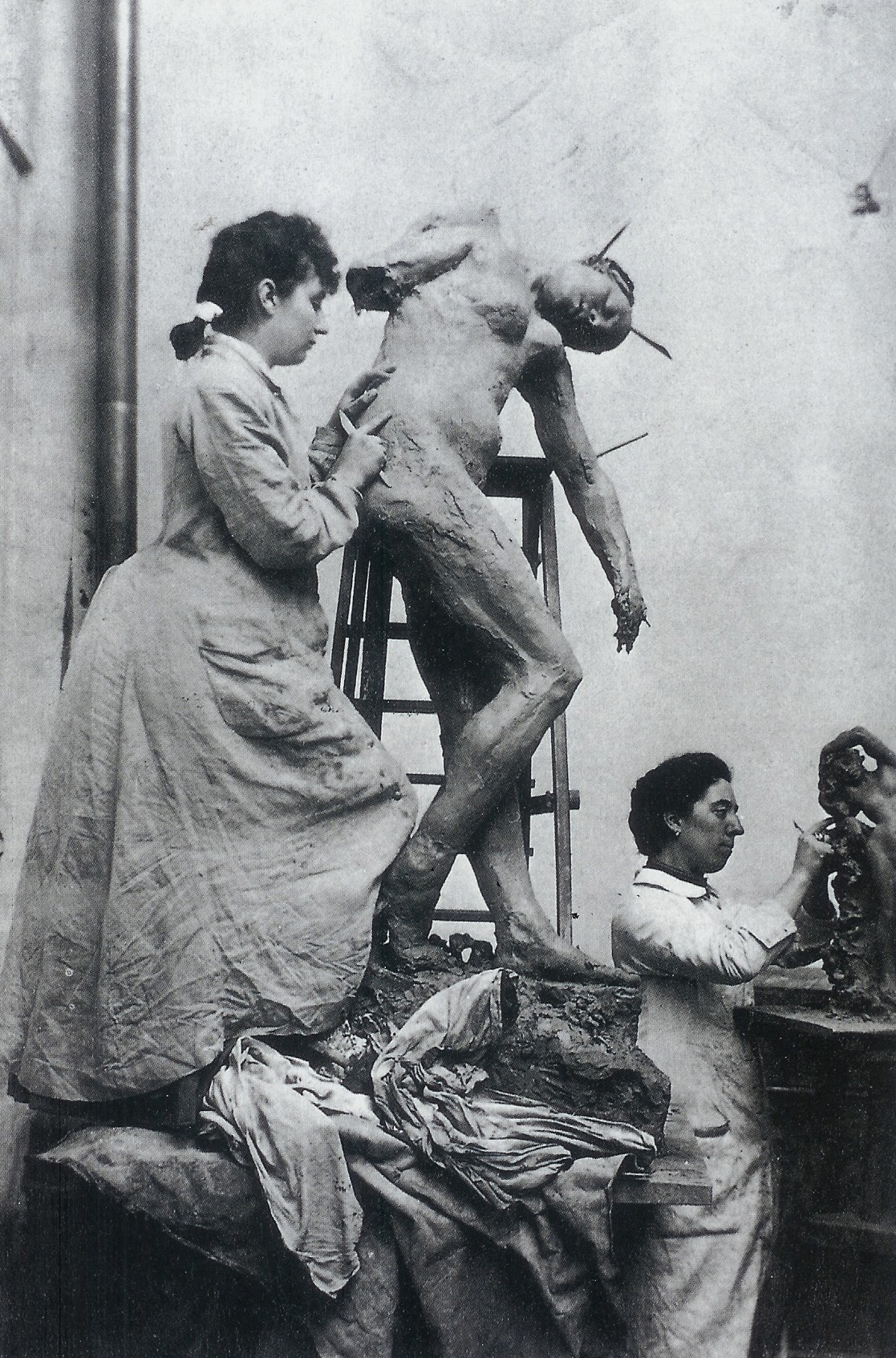This post is part of a series of guest posts on GPS by the graduate students in my Psychopathology course. As part of their work for the course, each student had to demonstrate mastery of the skill of “Educating the Public about Mental Health.” To that end, each student has to prepare two 1,000ish word posts on a particular class of mental disorders.
______________________________________________
Schizo-creativity? Does Madness beget Genius? by Rebekah Kabariti
There is often said to be a link between genius and madness, or more specifically, a relationship between artistic expression and mental health. Looking in particular at creativity and schizophrenia, the commonalities these two are sometimes known to share are abnormal interpretations of reality, disorganized thinking, or just plain unconventional behavior.
Schizophrenia has long been known for the bizarre behavior and thought processes of those affected. Hearing voices and seeing visions are the most recognizable symptoms that come to mind when thinking about this disorder. Hallucinations can come in a variety of forms; most common are auditory intrusions, followed by visual ones. These are most often reported as being persecutory and are viewed as an inescapable curse to the victim. Delusions and disorganized thinking can also create havoc in the lives of schizophrenics and result in dysfunctional relations and other characteristics that set them apart from the average individual. The response to hallucinations and delusions is often seen in the abnormal behavior of people, and while those affected are sometimes misrepresented by the media as being above average individuals or geniuses, they often do have unique abilities in the realm of creativity.
At the same time, eccentricity and cultural abnormality are often features of highly creative types. The stereotypical artist is viewed as a tormented soul, often with twisted perceptions of reality. The deeper a creative type burrows into despair, the more apparent the dysfunction becomes. It is not uncommon in the depths of the art world to hear of references to muses, be they inspiration or haunting to the artist, writer, or musician. In this often misunderstood and somewhat secretive phenomenon, there is an invisible source of life and death that draws out or dictates the performance of those most susceptible to it. But what do we call this susceptibility, and is there a reason for it that can shed the light of logic on what appears so evanescent? From where does this creative impulse come and why do all people not have the same intrinsic access to it?
Several famous figures are remembered for the role their illnesses played out so publicly for the benefit of our common knowledge. Perhaps the most renowned is John Nash whose schizophrenia, as a result of the movie, A Beautiful Mind, was portrayed in creative genius form with the inability to separate the gift from the disorder. Along with the treatment of his schizophrenic paranoia and delusions came the loss of his unparalleled mathematical abilities.
Another world famous genius, Albert Einstein, is genetically linked to schizophrenia though the diagnosis of his son, Eduard Einstein. The musical talent and intelligence he inherited from his father’s genetic pool of creativity was apparent, but while the talent may have been shared, a relationship was not, and was permanently severed soon after the onset of the disease.
 From the world of art and the masters of creative expression, perhaps the best known of these is believed to have suffered from schizophrenia along with other mental health problems. Vincent Van Gogh, best known for his many impressionist paintings, also left us the gift of his writings, through which he allows us a glimpse into his tormented soul and provides us with the direct observation and understanding of this link between creativity and psychotic torment.
From the world of art and the masters of creative expression, perhaps the best known of these is believed to have suffered from schizophrenia along with other mental health problems. Vincent Van Gogh, best known for his many impressionist paintings, also left us the gift of his writings, through which he allows us a glimpse into his tormented soul and provides us with the direct observation and understanding of this link between creativity and psychotic torment.
 In a more obscure example, a famous French sculptor of the 19th century by the name of Camille Claudel was another victim of schizophrenia. She was convinced of a conspiracy to kill her, and in a rage destroyed many of her statues. She was also related to a poet, and both were known for political reasons, which only reinforces that the link between psychosis and creativity is a clear and solid one. And the list could go on and on….
In a more obscure example, a famous French sculptor of the 19th century by the name of Camille Claudel was another victim of schizophrenia. She was convinced of a conspiracy to kill her, and in a rage destroyed many of her statues. She was also related to a poet, and both were known for political reasons, which only reinforces that the link between psychosis and creativity is a clear and solid one. And the list could go on and on….
Researchers have long been interested in the link between schizophrenia and creativity, and their findings show a clear relationship. Studies found that people involved in creative professions had higher scores of schizotypy than those who were not and that people with normal but high levels of schizotypal traits scored higher creativity scores. A connection was also made between creative thinking and the unusual perceptual experiences and magical thinking that can be experienced by schizophrenics. But where is this connection found, exactly? One of the directions the search for answers has led to is looking at the original source of both creativity and mental disorder: the brain. While the brain is one whole entity, it is also recognized for its lateralization, and some functions have shown a relationship between the two. Another study leads to possible evidence that supports the theory that both creative types and schizophrenics have a stronger dependence on their right cerebral hemispheres for processing strategies. Further theories point to the idea that relatives of schizophrenics have an advantage due to the same lack of lateralization function in the brain, which might explain the Einstein connection. This is saying that there is an increased use of the right hemisphere, commonly known as the source of creative ability. The difference between this in a person suffering from schizophrenia and their relative is the disadvantage of disorganized thoughts and language in schizophrenics, which prevents full use of their creativity.
Some findings show that there is a difference between intelligence and creativity, and define the later as divergent from the norm. While divergent thinking is not measured as being more intelligent or better, it is understood as being unique, which is what makes it distinctly creative. On the other hand, it is the inability to filter out sensory information in the frontal lobe that leaves schizo-creatives with an abundance of information, and ultimately, rather than a deficit, a source of creativity. In turn, the deficit is found in the cognitive disorganization that prevents full access and the certainty of use of this potential creativity.
Another aspect of the relationship between schizophrenia and creativity is the dopamine link. This is from recent findings that show a biological connection between what is found in healthy creative individuals and those with schizophrenia. Highly creative people appear to have a lower D2 receptor density in their thalamus, matching their fellow schizophrenics and providing yet another reason to believe that the link between mental illness and creativity is strong and valid.
Although the most eccentric artist may seem too far removed from the disordered mental disability of schizophrenia, the signs acknowledge the relationship. There are stories to inspire it and science to define it, so next time you consider your creative abilities, keep in mind the age old quote by Aristotle: “There was never a genius without a tincture of madness.”
